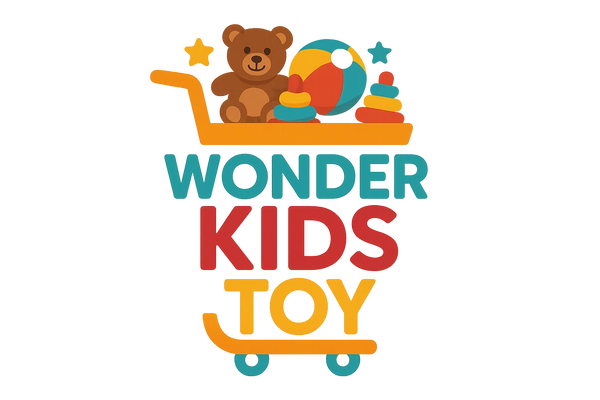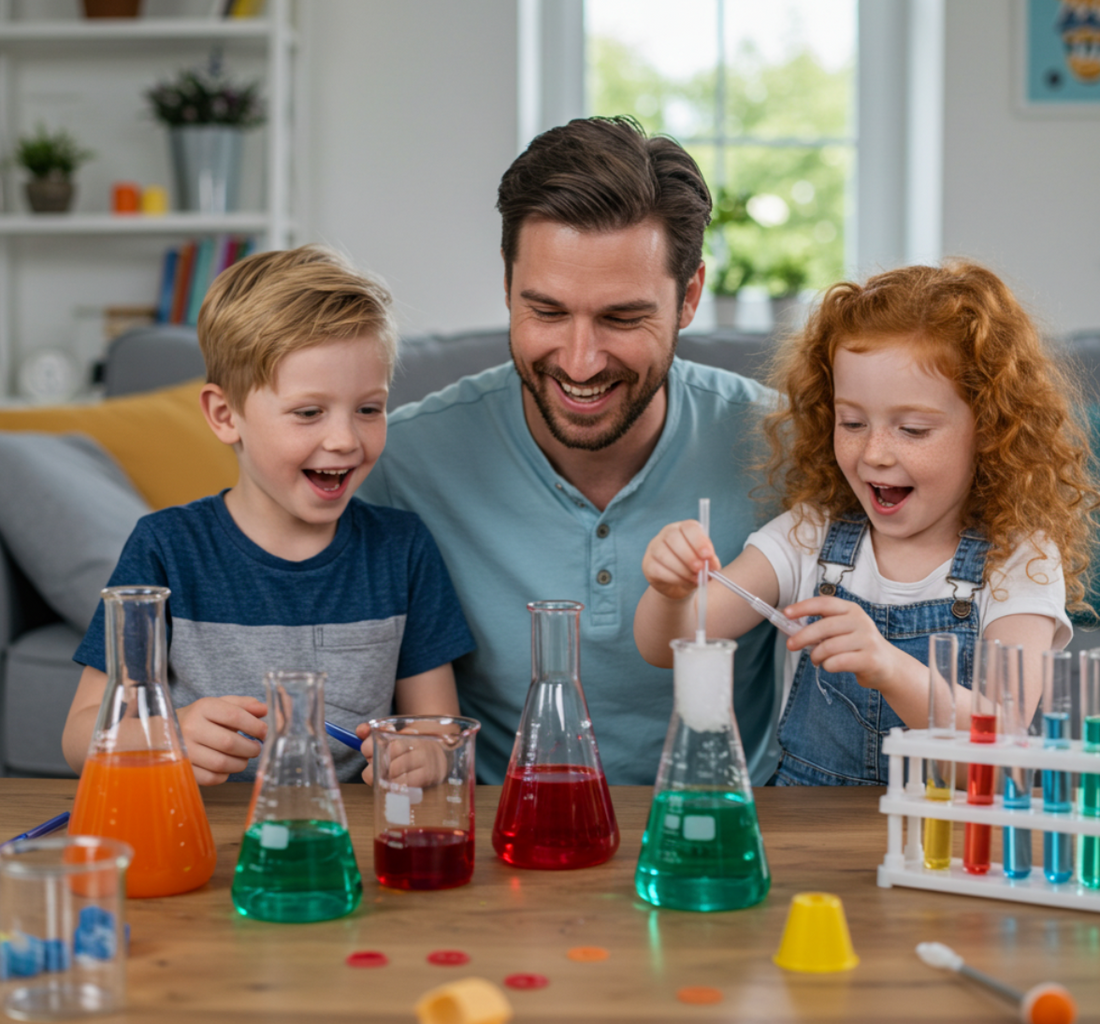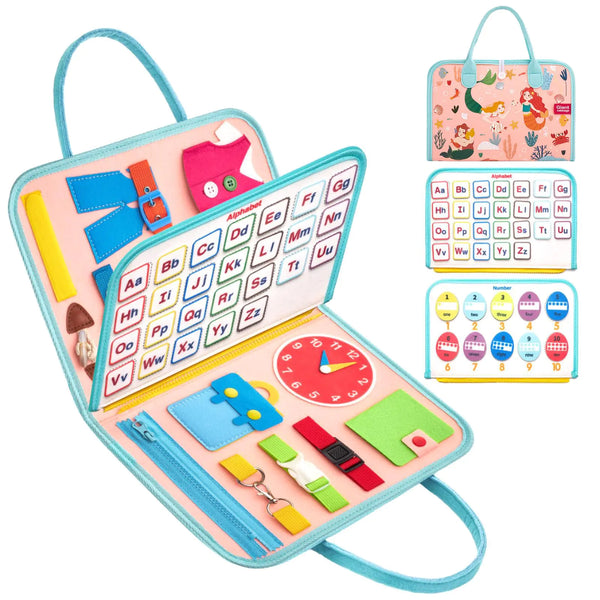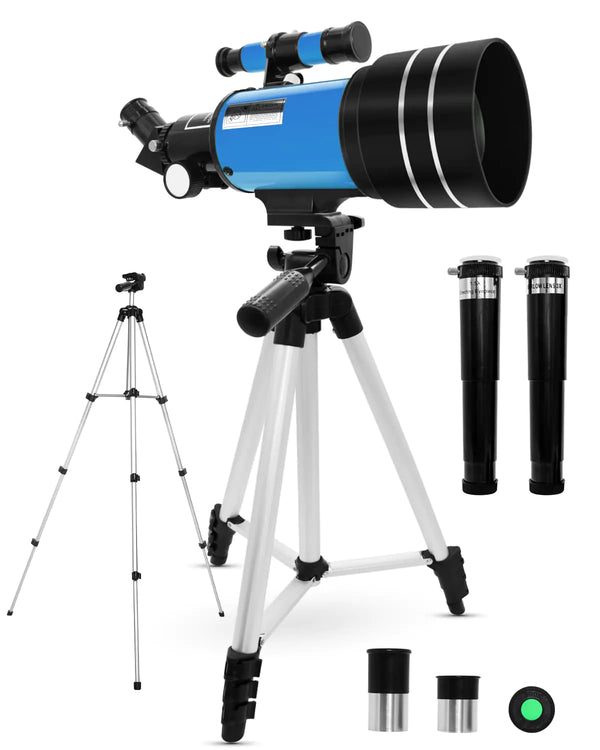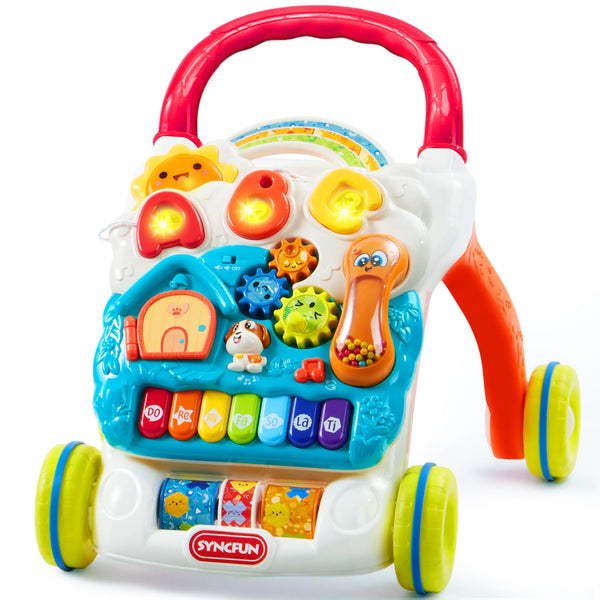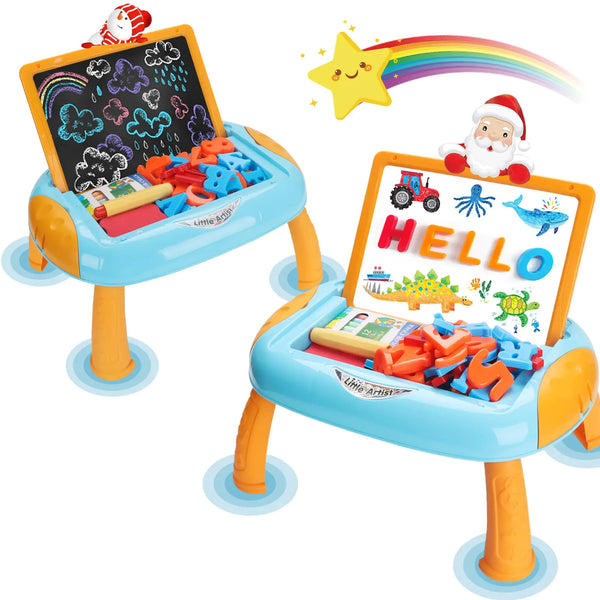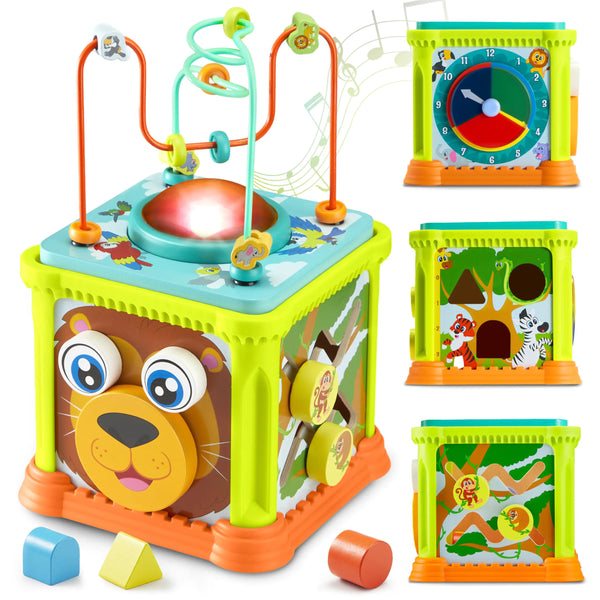As a dad, I've watched my kids grow from tiny bundles to curious, active little explorers, and it’s been the most incredible journey. Every parent wants the best for their child. We want to nurture their budding intelligence, spark their curiosity, and set them up for a lifetime of learning and discovery. That’s where the magic of Montessori toys and other developmental toys comes in.
I remember when my eldest was just a baby. The sheer volume of toys out there felt overwhelming. Bright colors, loud noises – it was hard to know what would genuinely help him learn and grow, versus what would keep him momentarily occupied. Through a lot of research (and a few trial-and-error purchases!), I stumbled upon the principles of Montessori education, and it honestly changed my perspective on playtime.
Why Montessori Toys Are a Game-Changer for Early Learning
You might have heard the term "Montessori" floating around, perhaps in discussions about preschools or educational philosophies. But what exactly are Montessori toys, and why are they so highly regarded for early childhood development?
From my experience, Montessori toys are different. They're not just about flashy lights or pre-programmed sounds. They're designed to be hands-on, engaging, and to encourage children to discover concepts independently. The idea is to foster a child's natural curiosity and allow them to learn at their own pace, through exploration and experimentation.
What Makes a Toy "Montessori"?
When I look for a Montessori-inspired toy for my kids, I keep a few key characteristics in mind:
- Simple and Purposeful Design: Montessori toys often have a clean, minimalist design. They focus on one concept at a time, preventing overstimulation and allowing the child to concentrate. Think natural materials like wood, and basic shapes and colors.
- Self-Correcting: Many Montessori materials are designed so that a child can immediately see if they've made a mistake (like a puzzle piece that only fits in one spot). This fosters problem-solving skills without the need for adult intervention, building confidence.
- Made from Natural Materials: You'll often find wood, metal, and natural fibers. These materials offer a rich sensory experience – different textures, weights, and temperatures – which is incredibly important for young learners.
- Encourage Independence: The goal is for children to be able to use these toys independently, fostering a sense of accomplishment and self-reliance.
- Focus on Real-World Skills: Although not always apparent, many Montessori toys indirectly teach practical life skills and prepare children for more complex concepts later on.
The Power of Hands-On Learning: More Than Play
One of the biggest takeaways for me as a parent has been the immense value of hands-on learning. It’s not just a buzzword; it’s how kids truly absorb information and build lasting understanding. My kids learn best when they can touch, manipulate, and interact with objects.
Think about it: instead of just telling a child about shapes, a shape sorter allows them to feel the circle, try to fit it into different holes, and discover for themselves where it belongs. This active engagement creates deeper neural connections than passive observation ever could.
Benefits of Hands-On Learning Through Play:
- Deeper Understanding: Kids don't just memorize; they grasp concepts through direct experience.
- Improved Retention: What they learn by doing, they remember longer.
- Problem-Solving Skills: They learn to experiment, try different approaches, and figure things out.
- Increased Engagement: They're more likely to stay focused and interested when they are actively involved.
- Sensory Development: Engaging multiple senses (touch, sight, sometimes even sound, and smell) enhances the learning process.
Essential Developmental Toys for Those Crucial First Years
The first few years of a child's life are a period of astonishing growth. As a dad, seeing my infant learning toys transition to educational toys for a 1-year-old has been amazing. Babies and toddlers are like sponges, soaking up everything around them. Providing the right developmental toys during this time is paramount.
For Infants (0-12 months): Laying the Foundation
Even before they can sit up, infants are learning machines. Their primary mode of learning is through their senses.
- Soft Sensory Balls: Different textures, gentle rattles inside. These help with grasping, tracking, and understanding cause and effect.
- High-Contrast Mobiles: A newborn's vision is still developing, so high-contrast black and white patterns are very stimulating.
- Discovery Mats/Play Gyms: These provide a safe space for tummy time and offer various textures, mirrors, and dangling toys to encourage reaching and grasping.
- Soft Stacking Rings: Easy to grasp, they introduce concepts of size and order.
For One-Year-Olds: Explorers on the Move
Around their first birthday, kids are usually on the move, pulling up, cruising, or even walking! Their world just got a whole lot bigger, and their curiosity is exploding. This is where educational toys for 1 year old become so exciting.
- Stacking Toys: Beyond simple rings, consider nested cups or larger blocks. These teach size, order, and early math concepts. My little one spent hours knocking down towers just to build them up again!
- Push and Pull Toys: As they master walking, these toys encourage balance and coordination. Think wooden animals or simple wagons.
- Shape Sorters: A classic for a reason! They develop problem-solving, spatial reasoning, and fine motor skills. Finding the right hole for the right shape is a mini-triumph every time.
- Activity Cubes: These are a fantastic all-in-one activity cube that combines multiple learning opportunities on different sides. Think bead mazes, spinning gears, sorting slots, and little doors to open. My kids have loved these, and they really promote extended engagement.
Building Blocks of Brilliance: Activity Cubes and Stacking Toys
Let’s dive a bit deeper into two of my absolute favorite types of developmental toys that really shine in those early years: activity cubes and stacking toys.
The All-in-One Wonder: Activity Cubes
An activity cube is like a miniature learning center packed into one compact toy. Each side offers a different type of interaction, making it perfect for holding a toddler's attention and encouraging varied learning experiences.
-
Benefits:
- Versatility: Offers multiple activities in one, saving space and providing diverse learning.
- Fine Motor Development: Bead mazes, spinning gears, and latches are perfect for honing those small hand movements.
- Problem-Solving: Figuring out how each element works.
- Cause and Effect: Understanding that an action leads to a reaction.
- Sensory Stimulation: Different textures, sounds, and visual elements.
I remember my youngest trying to spin the gears on his activity cube for the first time. The look of concentration, then the pure delight when they moved, was priceless. It's those small victories that build their confidence!
The Simple Genius: Stacking Toys
Stacking toys might seem basic, but their educational value is immense. From simple rings to nesting cups and wooden blocks, they offer so much more than just building height.
-
Benefits:
- Size and Order Recognition: Understanding "big" vs. "small" and the concept of sequence.
- Hand-Eye Coordination: Aligning pieces to fit together.
- Problem-Solving: Figuring out which piece goes where to maintain stability.
- Spatial Awareness: Understanding how objects fit together in space.
- Patience and Persistence: Trying again when the tower tumbles!
My kids have spent countless hours with their stacking toys. It’s fascinating to watch them move from simply putting pieces on randomly to carefully arranging them by size. It's a clear sign of their cognitive development at work.
Beyond the Basics: Fine and Gross Motor Skills Through Play
As children grow, so do their needs for developing different physical skills. As a dad, I've learned that play is the most natural and effective way for them to hone their fine motor skills (the small movements of hands and fingers) and gross motor skills (the larger movements of arms, legs, and torso).
Nurturing Fine Motor Skills: Precision and Control
Fine motor skills toys are crucial for tasks like writing, drawing, buttoning clothes, and using utensils. These are the tiny muscles that allow for precision and control.
-
Examples of Fine Motor Skill Toys:
- Puzzles: From simple knob puzzles for toddlers to more complex jigsaw puzzles.
- Bead Stringing Kits: Threading beads onto a string.
- Play-Doh and Clay: Squeezing, rolling, and shaping strengthens hand muscles.
- Building Blocks (smaller ones): Manipulating smaller pieces to connect them.
- Lacing Toys: Using a string to thread through holes in a shape.
- Activity Boards with Latches and Zippers: Practicing practical life skills.
I’ve seen firsthand how my kids' patience and focus improve when they’re engrossed in a fine motor skills toy. It’s quiet, concentrated play that really builds dexterity.
Developing Gross Motor Skills: Movement and Coordination
Gross motor skills toys are all about big movements that help children develop balance, coordination, strength, and agility. These are essential for running, jumping, climbing, and overall physical confidence.
-
Examples of Gross Motor Skill Toys:
- Ride-on Toys: Scooters, tricycles, balance bikes.
- Push and Pull Toys: Wagons, toy lawnmowers.
- Tunnel Crawlers: Encourages crawling and movement through space.
- Balls (various sizes): Kicking, throwing, catching.
- Climbing Structures: Small indoor climbing sets or soft play equipment.
- Tricycles and Bikes: Building leg strength and coordination.
Encouraging gross motor skills toys has been great for getting my kids active and burning off that endless toddler energy. It's amazing to watch them gain confidence in their bodies as they master new physical challenges.
The Broader Spectrum: Educational and Learning Toys for Every Stage
While Montessori principles offer a fantastic framework, it's important to remember that all educational toys and learning toys can contribute positively to a child's development. The key is to choose toys that are age-appropriate, engaging, and encourage active participation rather than passive entertainment.
How to Choose the Best Educational Toys:
- Consider their interests: What fascinates your child right now? Dinosaurs? Space? Animals? Find toys that align with their current passions.
- Look for open-ended play: Toys that can be used in multiple ways stimulate creativity and imagination.
- Durability and Safety: As a dad, I always check that toys are well-made and free from hazards.
- Developmental Appropriateness: A toy that’s too easy will be boring; one that’s too hard will be frustrating. Look for toys that offer a gentle challenge.
- Balance: A healthy toy collection includes a mix of building toys, role-playing sets, art supplies, and active play items.
I’ve found that the best educational toys are those that my kids return to again and again, inventing new ways to play and discovering something new each time. It’s not about having the most expensive toys, but the ones that truly spark their minds.
Where to Find These Wonderful Tools for Growth
Investing in educational toys is an investment in your child’s future. These are the tools that help them build foundational skills, explore their world, and nurture a lifelong love of learning. As parents, we have the incredible opportunity to provide them with the resources to thrive.
If you’re looking for a trusted source for high-quality Montessori-inspired toys, developmental toys, and a wide array of educational resources for kids, I highly recommend checking out wonderkidstoy.com. They are an established brand recognized for their commitment to delivering products that genuinely enhance a child’s learning experience. Explore their collection today and help your child unlock their full potential!

